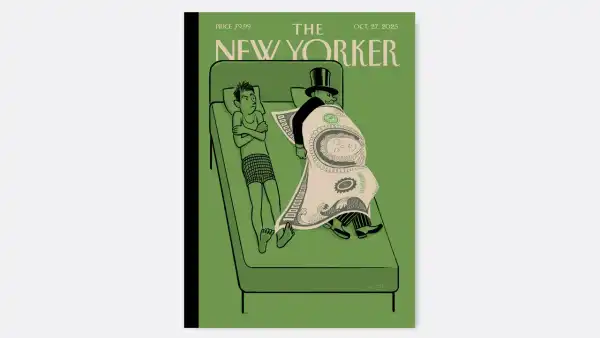
Don’t believe the critics: “The Happytime Murders” is far from the worst movie of the year. This doesn’t mean that it’s worth going to see—this is no recommendation—but I have seen it, and I don’t want my two hours back (as I would for some other recent movies, including some that have their art-house tickets conspicuously stamped). That’s because, for all its blatant offensiveness—which, though likely parodistic, is nonetheless unmitigated—the film is a noteworthy reflection of several strange but authentic aspects of moviemaking and moviegoing. What it’s saying may not be what it’s trying to say, but its indirections and misdirections are nonetheless fascinatingly symptomatic.
What “The Happytime Murders” reveals is something that’s particularly uncomfortable for cinephiles to face. Some movies may seem to be critic bait; “The Happytime Murders” is, rather, critic repellent, and the reaction that it provokes is in effect an allergic reaction—there’s something in the critical temperament that responds to it as a threat. The movie, directed by Brian Henson (who, as the son of Jim and Jane Henson, worked with them and directed several Muppets movies), is a live-action puppet movie in the vein of the Muppets series; though the characters don’t overlap, they share styles and gestures with the franchise’s signature creations. (The end-credits sequence, showing the puppeteers at work, is far more engaging than the movie itself.) “The Happytime Murders” is an overt parody of classic film-noir tones and themes—most conspicuously those of Raymond Chandler—starting with its main character, Phil Phillips, a private eye (voiced by Bill Barretta, both in live action and in the hardboiled, cliché-crunching voice-over that binds the entire film), who lives and works in Los Angeles, which (as scripted by Todd Berger) he none too originally dubs the “city of angels.”
The very premise of the film is the oppression of puppets in the human world, and the movie’s very first grotesquerie is the effort to parallel the status of puppets with that of black people in present-day America. Puppets are casually insulted and abused; police cuff and beat puppets with impunity, and Phil himself is a sort of fallen pioneer—the first puppet police officer, whose failures in the line of duty led to an official ban on puppet officers and who reinforces ingrained prejudices against puppets (such as the assertion that puppet police officers would be unwilling to shoot other puppets in the line of duty).
The allegory may have seemed bright on paper, at least to an all-white team of directors and writers (Berger co-wrote the story with Dee Austin Robertson), but it is condescending, trivializing, and literally dehumanizing—and it’s no mere backstory or fillip but a central theme. The action closely follows the familiar contours of private-eye dramas. Phil’s devoted, gum-cracking secretary, Bubbles (Maya Rudolph), informs him that a new client is waiting in his office. The client is a flamboyantly seductive woman puppet, Sandra (voiced by Dorien Davies), who pays him to locate her blackmailer. Tracing a lead in a puppet-porn parlor, Phil witnesses a puppet murder. When Phil’s brother, Larry (voiced by Victor Yerrid), a former star of a nineteen-nineties puppet show, “The Happytime Gang,” is also murdered, Phil defies the authorities and investigates.
Phil’s former partner on the force, Detective Connie Edwards (Melissa McCarthy), has been put on the case, and she and Phil team up to solve it. (In a peculiar twist, Edwards—and she’s always called Edwards, never Connie—is part puppet, indirectly because of Phil.) Other members of the show’s cast, including its human star, Jenny (Elizabeth Banks), also become targets of violence, and the story takes an inside-Hollywood twist involving syndication rights. As Phil and Edwards solve the case, Phil makes good on his former failing, restores the reputation of puppet cops, and finds romance with a human woman.
“The Happytime Murders” is adorned with some drolly salacious dialogue and some horribly clunky, tone-deaf, salacious dialogue, and some explicitly, intentionally exaggerated sexual puppet action (some of which makes unfortunately unforgettable use of Silly String). It also includes a great deal of explicit violence against puppets and as many clichés regarding gender as the classic-era crime stories, including Chandler’s own, serve up. As repellently cavalier as the movie is regarding race, it’s similarly sickening in its flaunting of venerable stereotypes regarding women and L.G.B.T.Q. characters—and not at all in a way that (as with racial stereotyping) mocks and laments those clichés but, rather, makes them romantic and erotic tropes. Rather than apostrophizing and examining the sexist and homophobic attitudes of the macho private eye from its classic incarnations, it serves them up straight with a twist of heroism.
So “The Happytime Murders” is, basically, disgusting. But even when it’s reprehensible, it’s not always bad. Some of its parodistic winks and turns are clever, and a few of its jokes are funny in a way that’s embarrassing to admit. The definition of laughter is physiological: laughter, if it’s authentic, is involuntary, and therefore outside the bounds of morality. That’s why comedy is so thrilling and so dangerous: it’s easy to make people laugh at remarks or actions that they despise and wish they never heard or saw. (For that matter, the evasion or transgression of values and norms is among the mainsprings of comedy—which is why comedians whose work is actually progressive, and who pull the curtain up on the nature of their art, are all the more impressive.)
The effect of the film’s parody, ultimately, is to force a troubling confrontation with venerated yet bigoted Hollywood works of the past. Those of us who love classic movies are, inescapably, in part, loving styles and modes that embodied and depended upon prejudices and exclusions that we revile and resist. What distinguishes critics from viewers at large is more than the mere knowledge of the history of cinema; it’s a love for the classics, a reverence for their creators. The reconciliation of that reverence with an awareness of the individual and institutional prejudices that the works embody is, at the very least, an ongoing and unresolved matter for analysis and introspection. “The Happytime Murders” is scattershot and oblivious, its intended corrective to present-day racism more than a little misguided. Yet, unintentionally, it hits critics in a very sensitive spot.
Sourse: newyorker.com






